What's New
Displaying results 1121 - 1130 of 4899

Resource | Publications,
Indonesia has a large population and is one of the top three countries, after Philippines and Myanmar, to have the highest rate of new HIV infections. Adolescent (15-19 years old) and young (20-24 years old) (AY) key populations (KP), including people who inject drugs (PWID), female sex workers (FSW), males who have sex with males (MSM) and transgender persons (TG), are extremely vulnerable to HIV transmission. However, very little is known about their socio-demographic characteristics, sexual risks, access to services, HIV transmission knowledge and perceived risk and HIV prevalence.

Resource | Publications,
Due to its characteristics, widespread cultivation and use, and diversity of its applications the Cannabis sativa L. plant directly pertains to at least 62 of the 169 targets found in 15 out of the 17 Sustainable Development Goals (SDGs). Surprisingly, this plant affects the SDGs both positively and negatively.
This report explains how the “hemp-issues” of Cannabis sativa L. (non psychoactivity-related uses) can contribute to meeting Goals 1, 2, 7, 9, 11, 12, 13 and 15, but also why reforming the current repressive, prohibitive, and marginalizing policies relating to “marijuana-issues” (psychoactivity-related uses of Cannabis sativa L.) is indispensable to meet Goals 3, 4, 5, 8, 10, 13, 16 and 17.
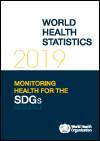
Resource | Publications,
World health statistics 2019 summarizes recent trends and levels in life expectancy and causes of death and reports on the health and health-related Sustainable Development Goals (SDGs) and associated targets. It then summarizes the major findings, including the availability of underlying data for monitoring progress towards the health-related SDGs (Section 9), and concludes by briefly discussing the implications for health policy and the planning of programmes. Annex 1 provides regional level statistics, Annex 2 presents country-level statistics for selected health-related SDG indicators and Annex 3 summarizes WHO regional groupings.

Resource | Publications,
In November 2017, 117 national delegations adopted the Moscow Declaration to End TB at the first WHO Global Ministerial Conference on Ending TB: A Multisectoral Response. They committed to “supporting the development of a multisectoral accountability framework” to accelerate progress to end TB. They called on WHO to develop the framework, working in close cooperation with relevant partners.
At the 71st World Health Assembly (WHA) in May 2018, Member States welcomed the WHO draft multisectoral accountability framework (hereafter referred to as the MAF-TB). The WHA also requested the Director-General to continue to develop the MAF-TB, in consultation with Member States, and working in close collaboration with partners, as well as to provide technical support for national adaptation and use of the MAF-TB.

Resource | Publications,
WHO is accountable for reporting back to the World Health Assembly on progress in implementing the Global health sector strategies on HIV, viral hepatitis and sexually transmitted infections based on data received from countries. This report assesses the mid-term progress in 2019 in implementing these global health sector strategies from 2016 to 2021.
The timeliness and availability of the data across the three diseases is limited, being for 2016 or 2017 in most cases. Key data, including 2018 impact data on incidence and mortality, were not available for this report, making it difficult to assess and validate overall trends since the launch of the strategies in 2016.
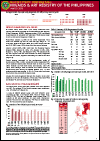
Resource | Fact Sheets,
In March 2019, there were 1,172 newly confirmed HIV positive individuals reported to the HIV/AIDS & ART Registry of the Philippines (HARP). Eighteen percent (215) had clinical manifestations of advanced HIV infection (WHO clinical stage 3 or 4) at the time of diagnosis.
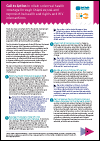
Resource | Fact Sheets,
There has been a marked shift in the global development agenda to develop, fund and implement multisectoral interventions that jointly advance both sexual and reproductive health and rights (SRHR), and HIV prevention, treatment and care. These joint interventions are increasingly being implemented by countries, especially within primary health care settings.
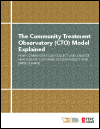
Resource | Publications,
With just over a year to go until the UNAIDS 2020 targets, we face a stark reality—there is immense inequality in treatment access among specific populations and in certain locations, despite the considerable accomplishment of delivering life-saving antiretroviral therapy (ART) to 21.7 million people, globally.

Resource | Publications,
This report examines the inclusion of HIV-related data and topics in 2018 Voluntary National Review (VNR) reports of Sustainable Development Goal (SDG) implementation and civil society parallel reports. The report builds upon “Getting on Track in Agenda 2030”, which assessed HIV inclusion in the 2017 VNRs.
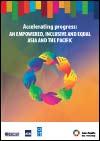
Resource | Publications,
The report proposes a framework of four synergistic elements necessary to advance inclusion, empowerment and equality: rights and justice; norms and institutions; resources and capabilities; participation and voice. The need for action on all four fronts is illustrated by a deeper look at three pivotal challenges confronted by the region – (1) climate change and its potential to deepen inequality; (2) the urgent need to boost domestic resource mobilization; and (3) the need to strengthen social accountability and civic engagement. It draws out policy messages on how an empowerment-and-inclusion approach to policymaking can be fostered, including on addressing violence against women and girls. The report provides strong evidence that promoting empowerment and inclusion are necessary approaches to reduce inequality and accelerate progress towards a broad array of Sustainable Development Goals. It is a contribution to the ongoing national, regional and global dialogues on opportunities to empower people, ensure their inclusion and advance equality.





